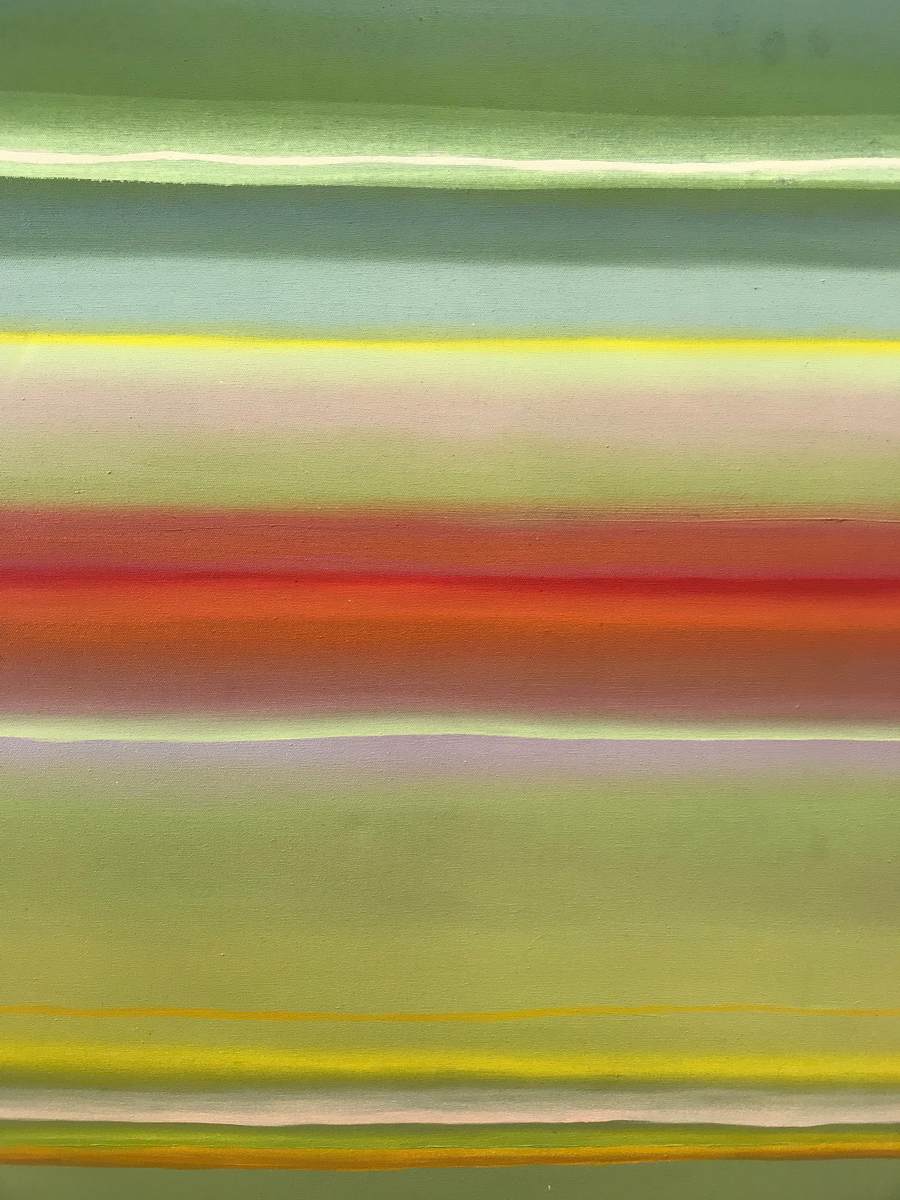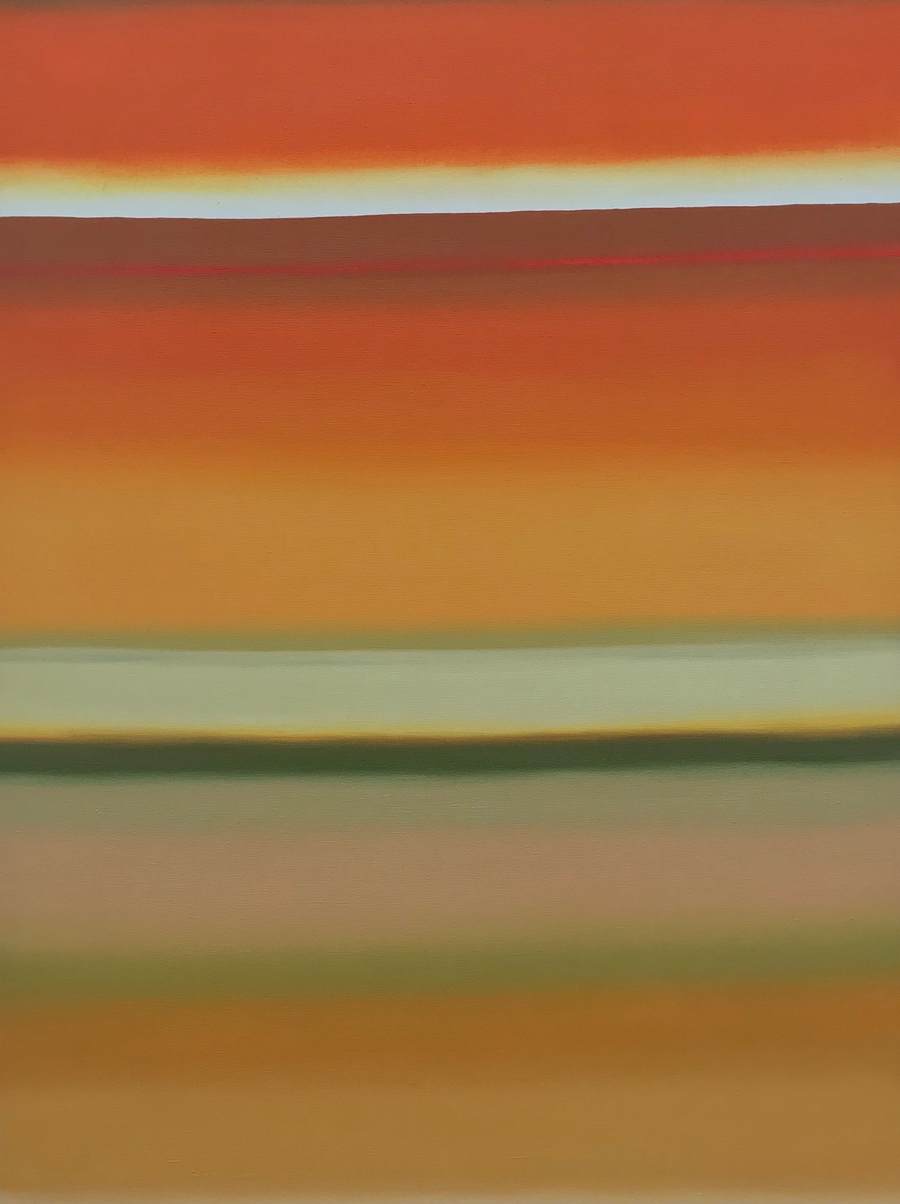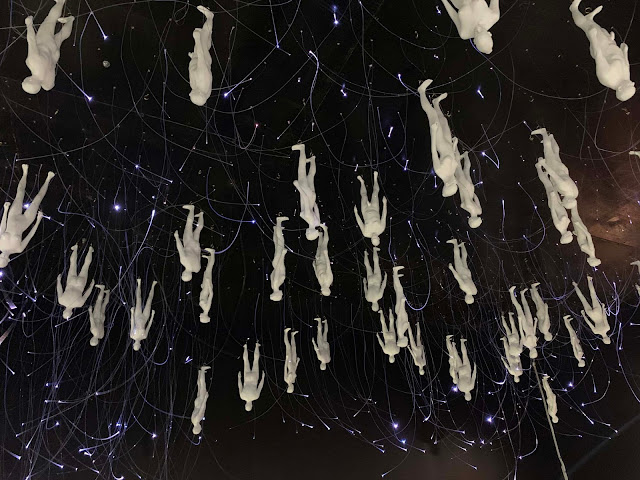"How the sky meets the land:" a conversation with Madison Bloch

A Florida-raised, NYC-based artist, Madison Bloch knows the east coast quite well. After traveling from one end of the country to another in a van, she found a way to document the small, pleasant moments from her trek by painting.
Covering her canvas with precise swipes of color, Madison uses the language of horizon lines to traverse themes of human perception, memories, and the natural procession of time. While spending lengths of time on the east coast interstates, she naturally began to understand the horizon as a constant across every place she passed through. "That's about when I realized how the sky interacting with land was so constant," she recounts from her time on the road. "In that same realm I was already thinking about memory and leaned more into time almost like sedimentary rocks or tree rings holding clues to the past. It was my brain making sense and relating what I was already thinking about to the new subjects I was curious by."

In her artwork, Madison represents time through stacked horizon lines. Each painting can be understood as a colorful timeline, or a composite of snapshot moments with the sun, the water, the flowers from the median, and the expansive fields of grass approaching the sky. Spending time with Madison's paintings is like peeling back the layers of many gleaming memories. "I really enjoy highlighting little moments to work as notes or context for a particular memory. It’s very interesting to me how parallel memories are to landscapes. It’s all about stacking for me. Even how a memory is a timeline of events, it’s time stacked. I love finding fluidity between the two subjects as well and how they overlap even as such different entities."
While Madison's paintings have a relatively conceptual framework, the imagery alone is what defines and anchors her work. The majority of her art is informed by personal experiences--her mobility through a variety of physical locations and the impromptu motions of daily life-- but it also responds to shared human experiences, such as watching the sunrise through a windshield, or catching the cool reflections of salty water. Wandering, seeing, and recording glimpses are the most integral parts of her process. Planning time to "research" ideas, as often encouraged in academic settings, is not necessary. As she reflects, "the academic process was for sure tough for me since a lot of my inspiration comes from small moments I don’t seek out. Being on a routine of creation was pretty mechanic and felt unnatural. I suppose that’s just how academic institutions need to be, but creating work post-school is definitely freeing."
Recently graduated artists, she suggests, should embrace the autonomy of the new "real-world artist" label and find involvement within their local art communities."Artists who strive to network and make a community I think end up being happier in the end," she explains. "I also think looking at work and reading is really important, though I for sure could be better at that. Critiques with friends is a great way to hear new opinions and maybe borrow some ideas. It’s super helpful to leave your own thoughts and see things from others perspectives."
You may view more of Madison Bloch’s paintings on her website - https://blochbloch.cargo.site/PAINT.


Comments
Post a Comment